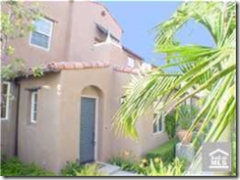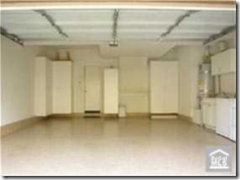Southern California is a beautiful place. The weather is perfect, there is a lot to do, and the people are generally friendly and keep out of your business. For those reasons and many others, I have chosen to make Southern California my home. However, Southern California is not perfect. The culture is infected with pathological beliefs that have led us to the huge problem with house affordability and the impending disaster in our real estate market.
What do I mean by Cultural Pathology? There are certain beliefs if widely held and acted upon by a group of people leads inevitably to collective suffering and/or destruction. One example we all see is in the American auto industry. Before imports hit our shores the American auto industry used to believe the quality of their product did not matter, people would buy their product irrespective of quality. For many years, the industry was successful despite this pathology. This belief allowed offshore competitors to enter the market, build market share, and finally take over the industry. The American auto industry’s belief system has had a pathologic effect on their business which has caused much suffering in Detroit, and it may ultimately lead to the bankruptcy and destruction of our major automakers.
The best treatise on the pathology of cultural beliefs was George Orwell’s novel 1984. In Orwell’s vision, a totalitarian State had convinced the populace the following:
- WAR IS PEACE
- FREEDOM IS SLAVERY
- IGNORANCE IS STRENGTH
Although these statements are clearly contradictory, in the story the slogans do make sense to the State. For example, through constant “war”, the State can keep domestic peace; when the people obtain freedom, they become enslaved to it, and the ignorance of the populace is the strength of the State. Just as Orwell’s Big Brother convinced the populace the above contradictions were true, Southern Californians (with a little help from their own Big Brother, David Lereah, president of the National Association of Realtors) have convinced themselves the following:
- APPRECIATION IS INCOME
- CREDIT IS SAVINGS
- DEBT IS WEALTH
Just as these statements are contradictory and ridiculous, the proof that these statements are believed is that they are reflected in the actions of Southern Californians. For example, through borrowing against one’s increasing home values, appreciation is turned to income; when people obtain more credit, they spend it like available savings, and a large amount of debt used to finance a large, opulent home makes one wealthy. Ask any homedebtor in Southern California, and they will tell you that makes perfect sense.
The problem is rooted in a basic misunderstanding of what separates the rich from the poor: the habit of saving. You have heard the expression, “the rich get richer and the poor get poorer.” It is more accurate to say the rich save money and the poor spend it: in the end, the rich will have money, and the poor will have none. This is not one of life’s inequities, but rather of of life’s simple truths.
When you hear your average Joe tell you he wants to be rich, what he is really saying is he wants unlimited spending power. He wants the ability to spend like the rich people he sees wearing Rolexes and driving BMWs to their mansions in Shady Canyon. This is why, when given the chance, poor people will emulate the rich by spending beyond their means in order to be rich. Of course, in the process, they spend themselves poor.
Appreciation is Income
Look at the difference between the behavior of rich and poor when it comes to home price appreciation. The rich view home price appreciation as adding to their net worth. If lower interest rates allow them to refinance, they will restructure their debt to pay off the loan more quickly in order to increase their wealth. Poor people view home price appreciation as income; free money for them to spend. If lower interest rates allow them to refinance, they will restructure their loan to pull as much home equity as possible and reduce their payment as much as possible so they can spend more. If any net worth happens to accumulate, they obtain a home equity line of credit and spend the appreciation as quickly as possible — it makes them feel rich even though it really makes them poor.
Credit is Savings
So how do the rich and poor deal with credit? The rich don’t carry consumer debt. Why would they pay interest on a credit balance when it almost always costs more than the income they earn on their savings? The rich will use credit sparingly and most often pay off any credit balances each month as the bill comes due. In contrast, the poor carry as much consumer debt as they can afford to service. Whenever they receive an increase in a credit line, they believe they have more money to spend, just like it was savings. In a strange way, a credit account is like a savings account, only it has a negative balance. In a savings account, the saver earns money; in a credit account, the spender loses money. Again, the rich have savings, and the poor have credit.
Debt is Wealth
There are a great many Southern California residents who live in big houses, and they believe that makes them rich. To them, the possession and use of an expensive house makes them wealthy even if they have no equity in the property. The rich buy less home than they can afford and work to pay off the debt in order to maximize their net worth.  The poor stretch their finances to possess more home than they can afford with loan terms which never retire the debt, or in the case of negative amortization loans, actually increases their debt held against the property. This ensures they either never gain any equity or only gain it by appreciation, and as mentioned previously, if prices appreciate they quickly withdraw the gain to fuel more consumer spending.
The poor stretch their finances to possess more home than they can afford with loan terms which never retire the debt, or in the case of negative amortization loans, actually increases their debt held against the property. This ensures they either never gain any equity or only gain it by appreciation, and as mentioned previously, if prices appreciate they quickly withdraw the gain to fuel more consumer spending.
It’s a California Thing
So what happens when you give poor people money? They spend it. I’m sure you have all heard the stories of people who won the lottery and managed to spend themselves into bankruptcy a few years later. These stories are classic examples of the pathology of the beliefs of spenders. A great many Southern Californians are spenders. This is why I contend that Southern California has a strong cultural pathology. The reason our house prices have been bid up to such dizzying heights is because there is a high percentage of our population in Southern California that subscribes to the spending habits I have described. They went out and borrowed as much money as they could with suicide loans, bought up all the real estate they could get their hands on, and in the process drove real estate prices into the stratosphere. In other areas of the country, reckless spending is not so trendy, and home prices have not been bid up so high.
.
{adsense}
.
I grew up in the Upper Midwest in a rural farm community. Pretentious displays of conspicuous consumption are less common in the Midwest, and consumerism is often viewed with contempt rather than envy. In short, there is a smaller percentage of the general population in the Midwest with the aforementioned pathologic beliefs. To prove this, I would like to profile Minnetonka, Minnesota, a suburb of Minneapolis with very similar income and demographics to Irvine. According to Sperling’s Best Places, the median income in Minnetonka, Minnesota is $84,024, and the median income in Irvine, California is $84,253. I think that is close enough to be a good comparable. The median home price in Minnetonka is $305,600 and the median home price in Irvine is $689,000 (92620 Zip Code). If my thesis is correct, one would expect to find a much higher percentage of home loans utilizing exotic loan terms in Irvine as compared to Minnetonka. Remember the Map of Misery?
In fact, according to the map, in 2006 the Minneapolis area had 8.7% of its loan originations were negative amortization, while Orange County had 32%. In all of California more than 80% of loan originations in 2006 were either option ARM or interest-only. Here we have two groups of people with the same median income, and with the same access to credit making very different choices. Potential homebuyers in Minnetonka and Irvine faced the same decision on taking out a suicide loan and buying more house than they can afford or chosing to live within their means. Very few in Minnetonka chose to overextend themselves, so they did not bid up the values of their houses. Orange County (and the rest of Southern California) chose to utilize exotic financing and thereby real estate prices were bid much, much higher. The high utilization of exotic financing was the cause of the price increase not the result of it. Nobody was forced to buy.
So if we accept the premise that Southern California has a high percentage of its population with the spending habits I have described, so what? Everyone here in Southern California is spending freely, feeling rich, and enjoying life. What is the problem? Where is the pathology? Isn’t it true Californians are just more financially sophisticated than the rubes back on the farm in the Midwest?
It is pathologic because it is not sustainable: It is a house of cards. There is an inevitable Day of Reckoning when all debts must be paid. Charles Ponzi (see image below) was the most extreme example of the pathologies illustrated in this post. So extreme was his activities, that the term Ponzi Scheme has become synonymous with the use of ever increasing amounts of investment or debt.  This scheme is also encapsulated in the expression “robbing Peter to pay Paul.” At some point, the debt becomes so large that no lender is willing to loan more money and no greater fool can be found to bail them out, and the whole system comes crashing down. However, while the debt was building, the debtor became accustomed to a certain lifestyle and level of spending. When the credit is cut off, the debtor can no longer spend, and a great deal of suffering ensues (See Dr. Housing Bubble).
This scheme is also encapsulated in the expression “robbing Peter to pay Paul.” At some point, the debt becomes so large that no lender is willing to loan more money and no greater fool can be found to bail them out, and the whole system comes crashing down. However, while the debt was building, the debtor became accustomed to a certain lifestyle and level of spending. When the credit is cut off, the debtor can no longer spend, and a great deal of suffering ensues (See Dr. Housing Bubble).
We are quickly approaching the Day of Reckoning in our housing market. In my view this will be Armageddon for California debtors: the spending will stop, they will lose their homes and with it their illusion of wealth, and they most definitely will not be enjoying life. The cause of all the weeping and gnashing of teeth will not be some exogenous event, but rather a direct result of the circumstances they themselves created.
.
For a refresher read: Financially Conservative Home Financing
P.S. Go back and click on the images.















